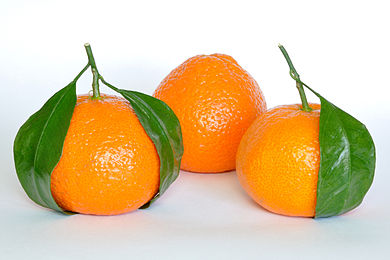Key Takeaways
- Clementines are a seedless hybrid variety, smaller in size than mandarins, and have a deep orange, smooth, glossy peel.
- Mandarins contain seeds, are not a hybrid variety, have a pebbly-skinned peel, and are rich in vitamin A.
- Both clementines and mandarins belong to the citrus family and are similar to traditional oranges, but each has slightly different sensory and physical properties.
Mandarins and clementines both belong to the orange family, and while they may look similar, there is a distinct difference between these two varieties. Nutritionally, all oranges are similar, being rich in vitamin C, antioxidants, and dietary fiber. Both clementines and mandarins provide trace amounts of iron, magnesium, calcium, folic acid, and vitamin E. However, clementines are a hybrid variety, seedless, and smaller in size compared to mandarins, which are not a hybrid variety and contain seeds. Mandarins are also rich in vitamin A compared to clementines.
What is Mandarin?
Mandarins (Citrus reticulata) are smaller than standard oranges and originate in China, where over 12 million tons of mandarins are harvested each year. China is also the largest grower and consumer of mandarins in the world. Compared to other oranges, they are easy to peel and can be readily separated into individual sections. Mandarins are smaller and less spherical in shape than common oranges and have pebbly skin. They are generally peeled and consumed fresh, used in salads, desserts, and main dishes, or made into fresh juice and frozen juice concentrate. Commercially available fresh mandarin fruits contain seeds, with the number of seeds in each segment varying greatly.
What is Clementine?
Clementines ripen around the Christmas season and are typically available in the United States from November to January. Commercially grown clementines are always seedless, making them a perfect fruit or snack for young children. Like mandarins, they are easy to peel. Clementines have a deep orange peel color, smooth and glossy appearance, and can be separated into 7 to 14 segments. They are naturally juicy and sweet, with less acid content than other oranges.
What is the difference between Clementine and Mandarin?
Clementines and mandarins have substantially different sensory properties and applications. For example, clementines were created by a French missionary named Marie-Clement Rodier in Algeria over 100 years ago, while mandarins originated in China. Clementines are grown in Algeria, Tunisia, Spain, Portugal, Morocco, Greece, Italy, Israel, Lebanon, Iran, and Turkey, while China is the largest grower and exporter of mandarins. Clementines are a hybrid between a Mediterranean citrus and a sweet orange, while mandarins are not a hybrid variety and are considered the ancestors of most other hybrid commercial citrus varieties. Thus, mandarins are more important as a parental species.
